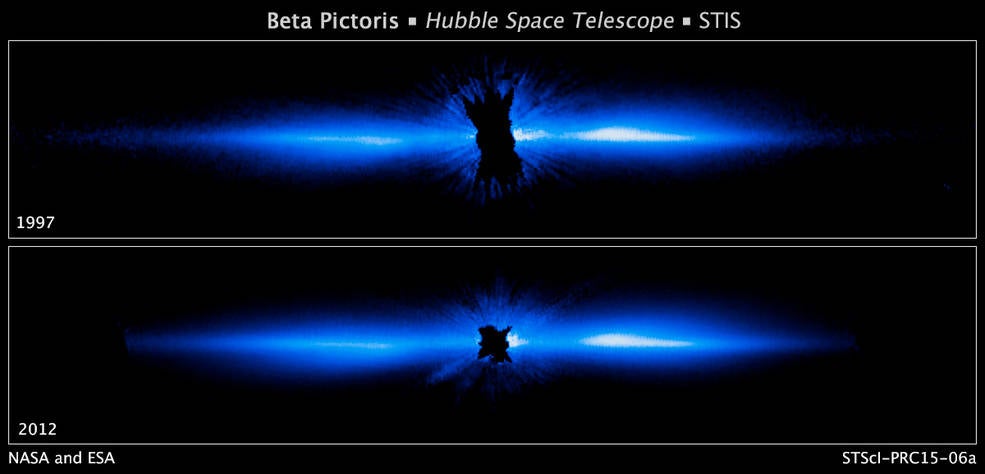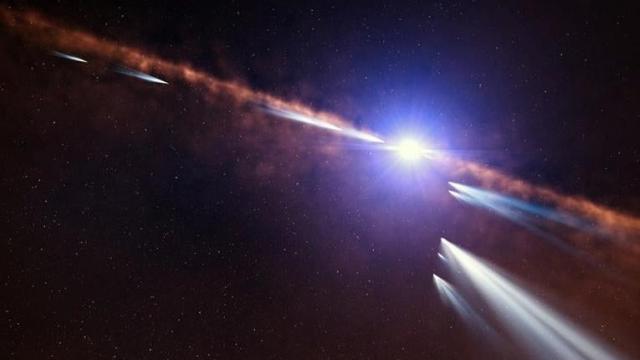A team of astronomers looking at a distant star system found 30 exocomets that look remarkably like the comets around our own local star. Down the line, more data from these comets could provide clues as to how water arrived on Earth.
The exocomets — “exo” meaning outside our solar system — were found around Beta Pictoris, a star nine times the mass of Jupiter and 63 light-years away. Beta Pictoris is orbited by two gas giants and is shrouded in a sprawling disc of debris that includes the 30 recently discovered exocomets. In study published today in Scientific Reports, the team calculated the size of the comets’ nuclei — basically, the solid part of the space rocks, excluding their tails — and they believe the icy objects are comparable to our local comets.
“The large number of detections allowed us to determine the size distribution of these celestial objects, i.e. how many small comets there are relative to the number of large comets,” Alain Lecavelier, an astronomer at CNRS in France and lead author of the paper, wrote in an email to Gizmodo. “We found that the size of exocometary nuclei in the β Pictoris planetary system is strikingly similar to that observed in the Solar System comets.”
The exocomets were spotted with TESS, a NASA satellite that primarily observes and discovers exoplanets. TESS makes use of the transit method; it observes the momentary dimming of stars as unknown objects pass in front of them, and since its inception it has developed a large catalogue of those transiting bodies.

The researchers observed the 20-million-year-old Beta Pictoris planetary system for 156 days and spotted 30 exocomets in that time. In this case, TESS saw β Pictoris dim due to the dusty tails of the exocomets. Then, the astronomical team estimated the size of the icy objects, which, by their calculations, ranged from 3 km to 8.7 miles across (the observations were possible thanks to the comets’ dusty tails, which are much larger than the nucleus).
The distribution of the exocomets’ size fits nicely with the astronomers’ expectations for a group of objects derived from “a cascade of collisions and fragmentations,” Lecavalier said, as comets and asteroids are. These glomming and splitting events are integral to the formation of planetary systems and their occupants, like Earth and the Moon.
“We already suspected this fact from comets in the solar system; today we confirm it for the first time in an extrasolar planetary system,” Lecavelier said.
The team’s work is not done. Further observations could reveal how the exocomets formed and perhaps even add credence to one theory of how water arrived on Earth: that at least some of our planet’s water came from the ice of fallen comets. As reported by Scientific American, different isotopes of water have been found on different comets, so giving the Beta Pictoris exocomets a spectroscopic once-over would give researchers a larger sample size for understanding the chemical makeups of these “dirty snowballs.”
Other telescopes — namely Hubble and Webb, which is expected to start scientific observations this summer — can scrutinize the spectroscopic makeup of objects, meaning that those spacecraft could study the Beta Pictoris exocomets’ tails and reveal their constituent elements. If water like ours is frozen on those comets, we could know soon.
More: Mega Comet Arriving From the Oort Cloud Is 137 km Wide
